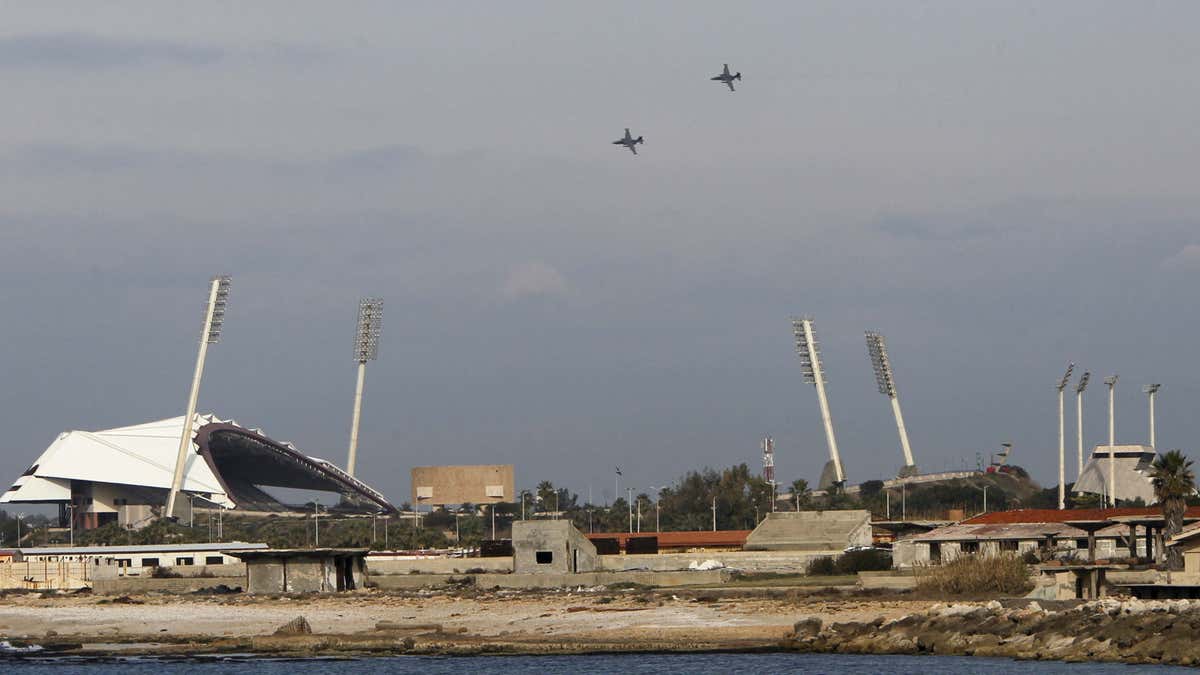
Jan. 28, 2016: Russian warplanes fly in the sky over the Mediterranean coastal city of Latakia (Reuters)
Russian warplanes reportedly bombed a secret military base in Syria used by elite American and British forces last month.
The Wall Street Journal reported Thursday that the Russian strike on the CIA-linked site was part of a campaign by Russia to pressure the White House to agree to closer cooperation in the Syrian skies, U.S. military and intelligence officials said.
Despite the fact that some forces could have been killed and the bombing dampened relations between Russia and the Pentagon and CIA, the White House and State Department still persued a compromise.
The U.S. and Russia agreed to a pact last week to target airstrikes against the Al Qaeda affiliate in the region – Nusra Front – despite objections from the Pentagon and CIA. Russia agreed to stop airstrikes on U.S.-backed rebels and restrain the Syrian air campaign. The two sides are still talking about designations where Russia would need U.S. approval to conduct an airstrike.
According to The Wall Street Journal, deal backers in the White House and State Department believe U.S. airstrikes on the Nusra Front in areas that were previously occupied by Russian forces would provide protection for allies in Syria.
However, officials in the Pentagon and CIA contend that Washington bowed to Moscow in the deal and believe that the U.S. needs to confront Russia.
The Russian strike on the base occurred on June 16. The U.S. and British forces help maintain what is described as a buffer zone in Jordan. Forces go into Syria to help protect Jordan from Islamic State, U.S. officials told The Journal. Forces didn’t spend the night, due to security reasons.
Nearly a day before the strike, 20 of 24 British special forces pulled out of the base. The U.S. tracked a Russian plane heading toward the base. The warplane dropped a cluster bomb, according to U.S. and rebel officials.
After the first strike, U.S. central command air operations center in Qatar called Russia’s air campaign headquarters in Latakia, Syria to tell them that the base shouldn’t be attacked.
However, Russian forces struck again nearly 90 minutes after the call was made. Russian pilots didn’t respond to U.S. calls using frequencies the two sides had previously agreed to use in case of an emergency.
At least four rebels were killed in strikes.
Russian officials initially told the Pentagon that the military thought it was an Islamic State facility, but U.S. officials rejected the notion because of what they described as a unique way the base was fortified, The Journal reported.
Russians then said that the Jordanians had given them the go-ahead to strike the base, but the U.S. double-checked and said no such authorization was given. Later, Russia told the U.S. that their headquarters wasn’t in position to call off the strike because the U.S. didn’t provide them with the proper coordinates of the base.
U.S. officials said that the Pentagon had never asked the Russians to steer clear of that area because it wasn’t close to the front lines and Russian aircraft didn’t operate in that part of Syria anyway.
The strike has increased the distrust between U.S. and American forces in Syria. According to the Wall Street Journal, the U.S. didn’t want to give Russia any more information than they had to.
Since the strike, the U.S. has told Russia to steer clear of the Jordanian border.




















